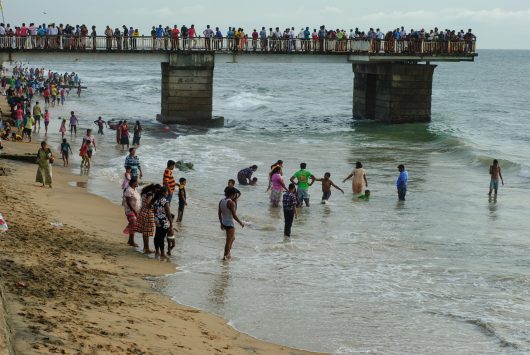A Resolution to the Quality of Water in Sri Lanka

The U.N. estimates that in just nine years, half the people in the world will not have access to safe water. Water sources will be affected by climate change, pollution, war, over-development and unsustainable agriculture. Sri Lanka has an abundance of safe water resources, however, the water is not distributed equally.
Almost 90 percent of the people living in urban areas have access to safe water, compared with 60 percent of rural communities. The quality of water in Sri Lanka for the three million people living in dry zones can only be described as contaminated. There is no safe water source within a 200-mile radius, leaving people in the dry zones dependent on groundwater from dug wells and tube wells.
Chemicals, such as fluoride, nitrates and arsenic, are present in groundwater at very high levels as a result of their geogenic origin. Consequently, these chemical contaminants affect the quality of water in Sri Lanka’s dry zones and in turn, the health of people who get their water in dug wells and tube wells. An increase in kidney diseases and cancer in Sri Lanka has been attributed to exposure to these chemicals.
People have attempted to resolve issues with the quality of water in Sri Lanka with bowser-driven water distribution, residential rainwater harvesting plants and bottled water, but a long-term solution is needed. The Sri Lankan National Water Supply and Drainage Board awarded Veolia, a French firm, a $164 million contract to design and build five water treatment plants, 12 service reservoirs, five pumping stations and 430 kilometers of transmission and distribution pipes. The water treatment plants will be located in Matale, Ambangang, Ukuwela, Udatenna and Rattotta. The plants will provide clean safe drinking water to more than 350,000 people in the agricultural area of Greater Matale in central Sri Lanka.
Clean, safe water is critical to the health of a nation and its people. The five water treatment plants are just the beginning of efforts to provide a sustainable solution to the quality of water in Sri Lanka that provides the entire population with a clean, safe water.
– Mary Barringer
Photo: Flickr
